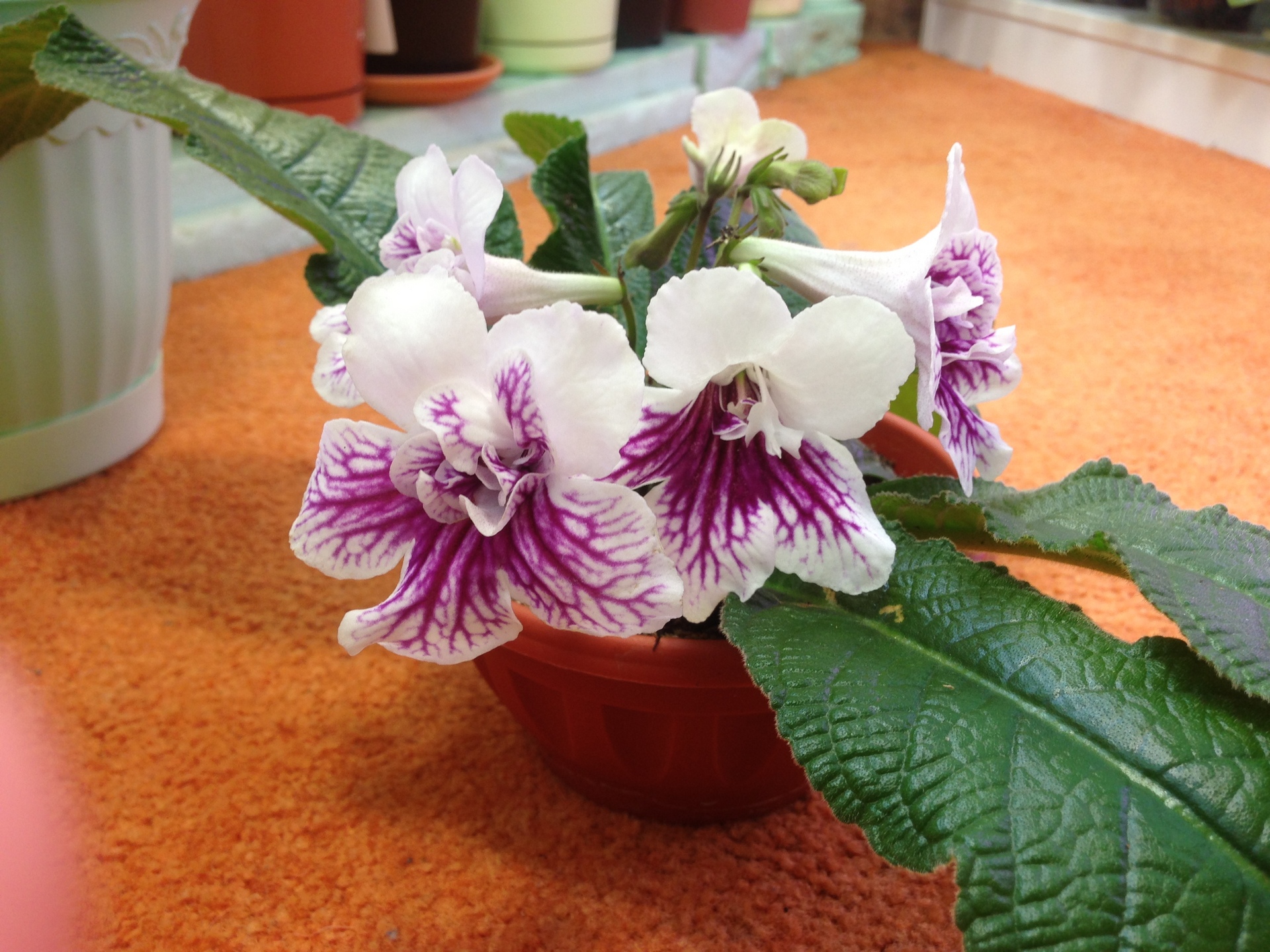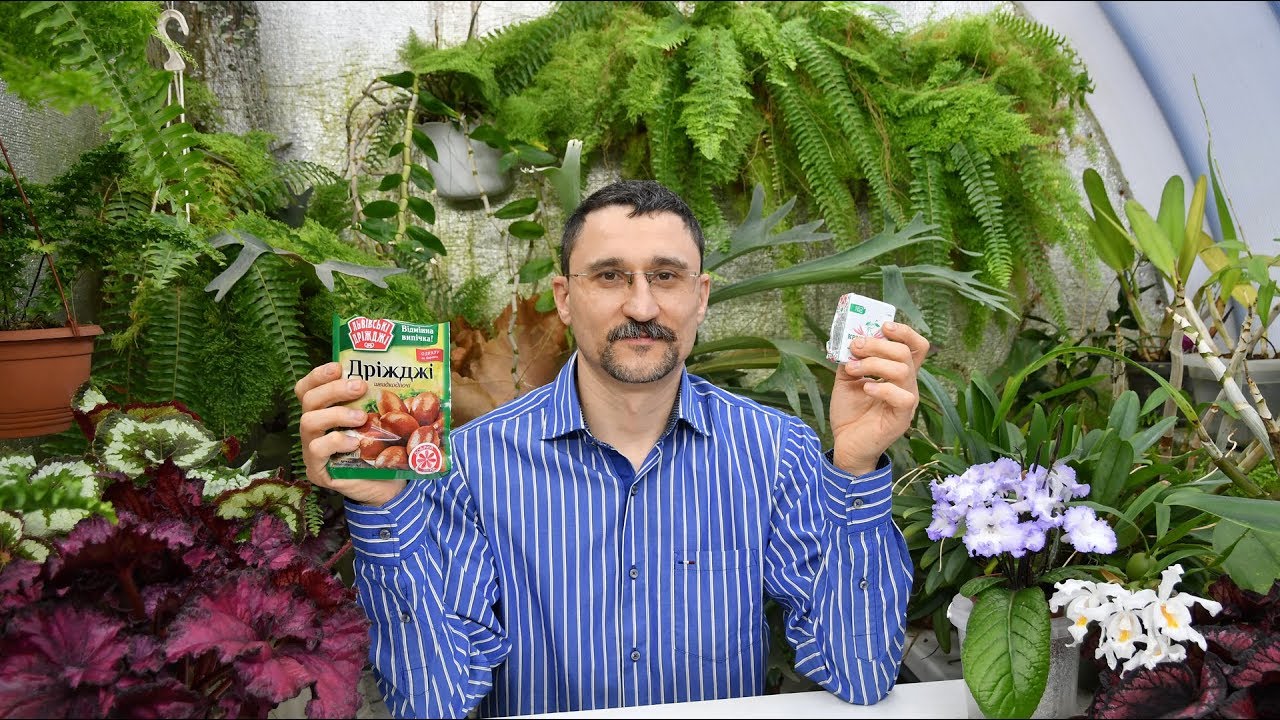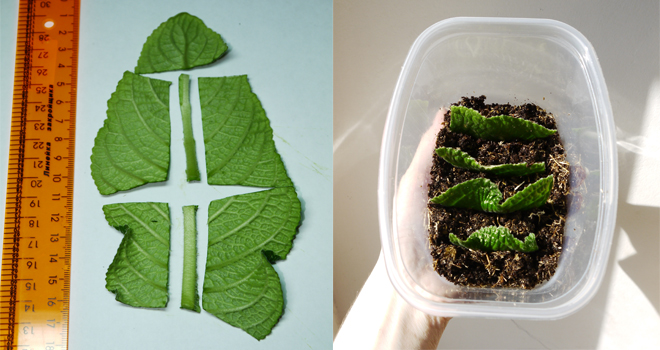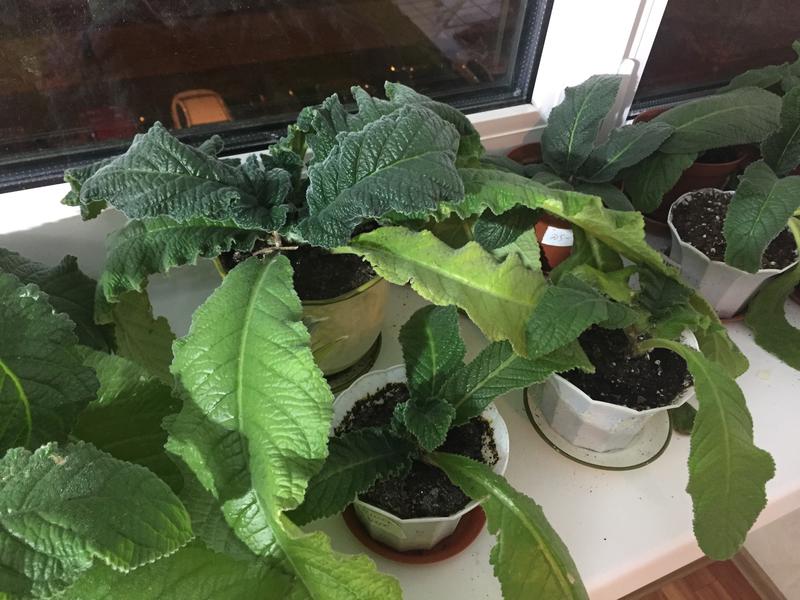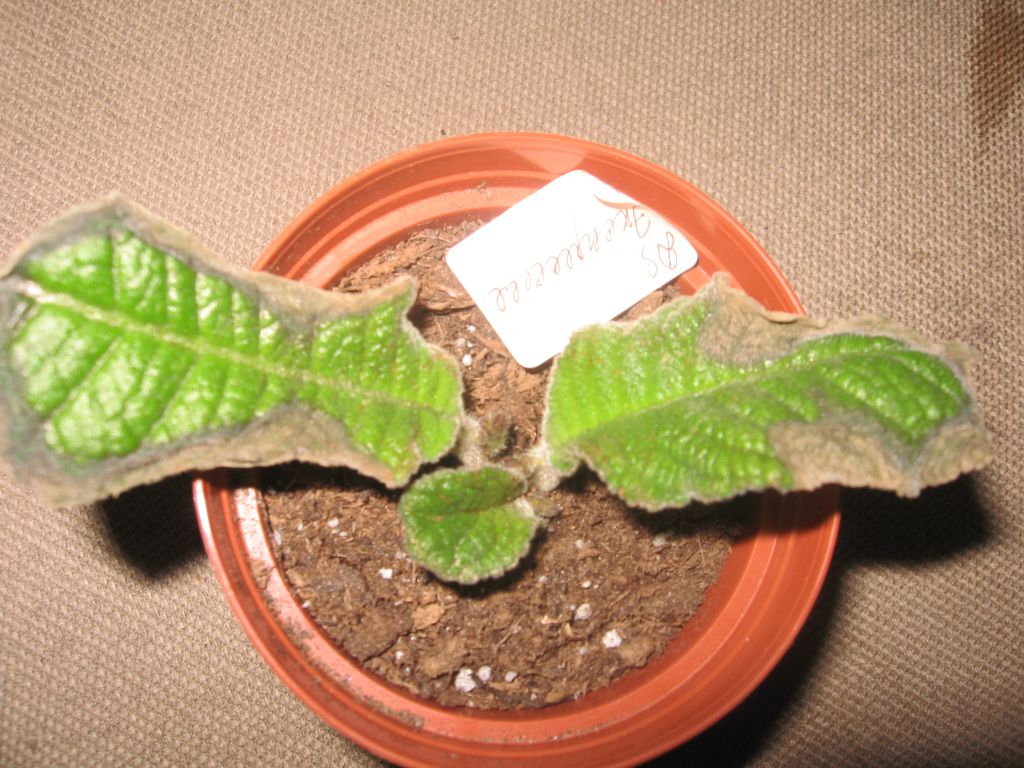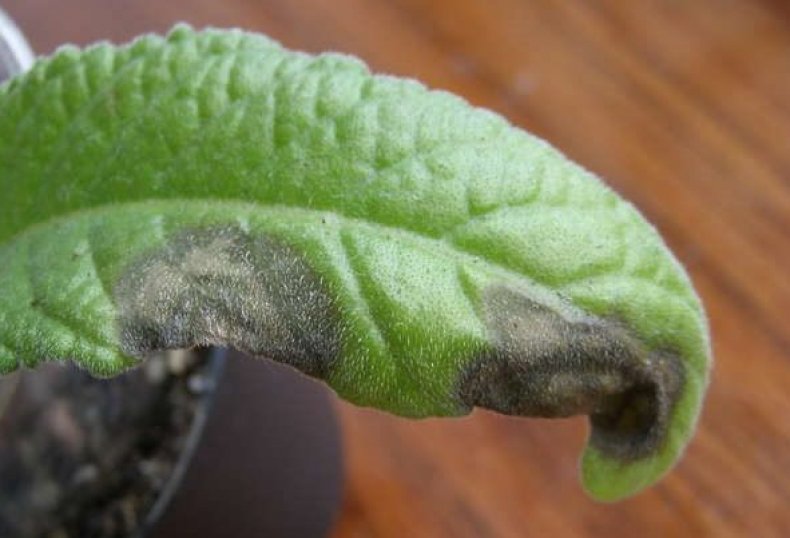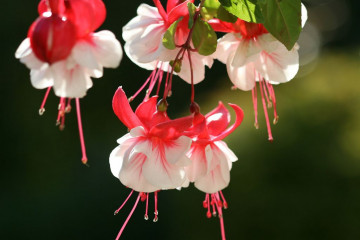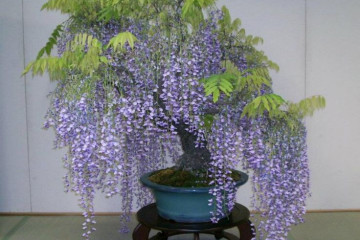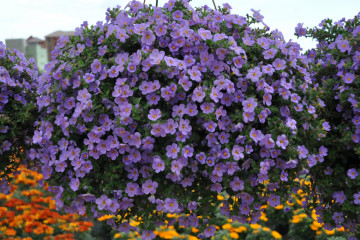Streptocarpus - care and cultivation at home
Content:
The streptocarpus flower (botanical name - streptocarpus) is one of the most beautiful indoor plants for the home. He has all kinds of shades and patterns on the petals of flowers. Not surprisingly, growers are delighted with this beauty. That is why they strive to reveal and apply all the secrets, practical tips for caring for streptocarpus. It is enough to grow one bush, and it will delight you with hundreds of the brightest buds that will bloom for six months.
History of appearance
The exotic flower was discovered by J. Bowie. In the 19th century, while performing a mission in South Africa, he found an unusual plant that was included in the collection of the British Museum. With its eccentricity, it won the hearts of many overnight.
Description of streptocarpus
The name consists of two Greek words: "curled" (streptos) and "fruit" (carpus). The plant belongs to the Gesneriev family. Most of all, the flower loves the wooded parts of the mountain slopes, but it will grow well in a pot at home with proper care. It belongs to the number:
- Lithophytes. Such plants grow on rocks of stone. Streptocarpus have a separate species - rocky, which is often found in such areas. Differs in bright blue color of buds and abundantly growing leaves.
- Epiphytes. Large trees are used as support.
Streptocarpus care and cultivation will not be difficult. It is necessary:
- choose the right soil,
- choose the best place,
- provide watering,
- take care of it with great attention after planting in new soil, having performed all the necessary manipulations in order to successfully root the flower.
The number of transplants is determined individually for each type.
Common varieties
Classic indoor varieties:
- Royal (Rexa). This species was the first to be found. The formed rosette contains elongated pubescent leaves that can reach 25 cm in length. The flowers are painted in different shades: white, pink, red and purple. There are patterns on the petals.
- Rocky (fake violet). It is grown both as a shrub and as an ampelous species. Long, thin stems are covered with numerous rounded leaves and pale purple flowers.
- Wendland. A single-leaved plant with a large velvet leaf. Pink flowers rise above him on a separate stem.
Other species are rarely found at home.
Home care
Home care for streptocarpus is much easier than for Saintpaulias, which also belong to the Gesneriev family.
Temperature and lighting
In summer, when flowering is in full swing, it is better to stick to a temperature of 20-25 degrees. In winter, during the dormant period, - 15-18.
For streptocarpus, both extreme heat and frost are dangerous. It is worth making sure that the thermometer readings do not fall below 8 degrees, otherwise the flower will begin to wither and subsequently dry.
The flower does not like darkness. Under any conditions, he needs sunlight. The morning or evening rays of the sun are especially pleasant to him. In the summer hour, it is advisable to take the pot out to the balcony - this way the buds will be tied more quickly.
Watering
Avoid over-watering, it is better to slightly dry the substrate. The roots of the plant are very delicate, therefore, with stagnant moisture, they instantly begin to rot. As soon as the soil has dried a little in the upper layer, you can water it, but by one third. In winter, watering becomes less frequent.
Spraying
Spraying streptocarpus is undesirable, despite the fact that they prefer humidified air. When spraying, moisture gets on the delicate flowers and leaves. Leaf pubescence contributes to the retention of this moisture, respectively, rot and brown spots may occur.
Humidity
Culture loves humidity. Therefore, it is advisable to purchase a humidifier or just put a container of water nearby. You can spray only near the pot, but not the plant itself.
Soil and dressing
Description of the soil in which you can plant or transplant the African handsome man:
- Easy,
- Loose,
- Water, - and breathable,
- Not sour.
You can make the soil yourself. To do this, use:
- Leafy land (2 parts),
- Sod land, sand and humus (1 part each).
In stores, it is best to purchase soil for Saintpaulias. Before planting, perlite, vermiculite, sphagnum moss and activated crushed coal must be added to it.
How can young streptocarpus be fed, says Pavel Yenikeev, a famous florist.
Streptocarpus is very fond of feeding. You should definitely alternate the types of fertilizers:
- In the spring - nitrogen (for ornamental plants),
- After the appearance of buds - potash and phosphorus (for flowering plants).
Flowering features
The flowering of the culture is always bright and abundant. Already when the baby has just begun to actively develop, it begins to bloom.
Types and forms of flowers
The flowers of the plant differ in different shades: from delicate white and pink to purple-lilac. In diameter, they can reach 9 cm, but more often - 2-3 cm.
The form is:
- Drooping
- Umbrella,
- Close to a violet
- With a deepened neck,
- Corrugated.
The petals have patterns of various types and lines.
Flowering period
Basically, streptocarpus blooms in the warm season - in spring and summer. This period takes about 9 months. However, some species are covered in flowers all year round.
Reasons for the lack of flowering, how to fix
If your favorite flower is not covered with buds, then you should change:
- Poor lighting for brighter,
- Remove excessive watering,
- Add fertilizer additionally,
- Remove excess leaves.
Flowering care
During the flowering period, the plant does not need additional feeding and excessive watering.It is enough to observe the usual care for the culture and create conditions for the flow of constant sunlight in order to extend the flowering period. Avoid direct sunlight.
Reproduction
Stretocarpus can reproduce in different ways. At the same time, a new strong plant is obtained from almost any part of the mother.
Germinating seeds
Streptocarpus from seeds at home can be propagated easily. Seeds sprout in a short time and take root well. The only caveat may be that they will not retain all of the hybrid qualities. Therefore, sowing material should be purchased only from reputable sellers.
Scheme:
- Prepare the soil and place it in the greenhouse by sprinkling liberally from a spray bottle.
- The seeds are scattered from above, do not deepen. For them to germinate, you need sunlight. You don't need to soak the seed.
- Cover the greenhouse with a lid and place in a warm, bright place.
- Ventilate once a day for 15 minutes by opening the lid.
- The first shoots will appear within 2 weeks.
Rooting cuttings, leaves or leaf fragments
How can you propagate streptocarpus by cuttings - to plant an adult plant that has several leaf rosettes. Moreover, each of them must have roots and a growth point. After abundantly wetting the substrate, carefully remove the plant, shake off the ground and divide the flower with a sharp knife. Cut the cut with charcoal or cinnamon, plant the resulting parts in separate pots.
When streptocarpus propagates, a leaf fragment is taken not very old, but not young leaves either.
Sheet cutting scheme:
- In two parts across,
- Along in two parts, cut the central vein separately,
- On 4 parts: two longitudinal and transverse. The central vein is also cut separately.
The vein is thrown away, the remaining parts are cut downward and planted in the greenhouse in the prepared soil. Shoots germinate after 2 months.
Transfer
The best time for transplanting streptocarpus is considered early spring, then it begins to grow actively. In winter, it is extremely rare, but you can also transplant a flower, but in these conditions it will be more difficult for it to take root.
Transfer after purchase
After purchase, the plant should be carefully inspected. If the substrate is completely braided with roots, then the plant is urgently transplanted.
In order for the flower to develop effectively and well, a prerequisite is the choice of a spacious pot.
After transplanting into the prepared soil, the flower does not need to be fertilized with anything for 2 months. During this period, periodically loosen the soil, watering is carried out after the top layer has dried.
Breeding transplant
When the seeds have sprouted, or cuttings, leaves have taken root, you should wait for a period of active growth. It usually occurs in the spring. Then the young animals are transplanted.
Young streptocarpus can be transplanted annually for 2-3 years. An adult plant - no more than once every 2-3 years. The reason for the transplant will be the developed root system of the plant.
Growing problems
Problematic places in the cultivation of stretocarpus are:
- Leaf diseases
- Agrotechnics.
Pale leaves
The pallor of a leaf in a culture occurs when it lacks nutrition, or the root system has grown too large. The solution to the issue will be transplanting and feeding.
Drying out the tips of the leaf
The tips begin to dry when the air is dry in the room, or the plant requires a transplant due to the tightness in the pot. It is worth humidifying the air in the room and replanting the flower.
Falling leaves
When the leaves become lethargic, and later they fall off, then the flower should be placed in a room with a lower temperature. Heat has a detrimental effect on flowering development and stem growth.
The affected foliage should definitely be removed, the flower itself should be placed in a place where there is diffused light.
Pests
Pests that attack the culture:
- Platypus mites (on the wrong side of the leaf) and greenhouse mites (at the growing point);
- There are also putrid mites that settle in the soil;
- Gray rot. It is created by a fungus that infects the leaf plate.
Other problems
Since the plant comes from a tropical area, it loves the soil with an abundance of impurities. The soil must allow air to pass through so that the root system grows without problems. If you fill the flower too much, then problems with the roots will appear, children will no longer appear and the buds will no longer bloom.
Europe and America fell in love with streptocarpus for their extraordinary color and shades of buds, unpretentious care. Community groups of enthusiasts involved in the cultivation of this crop unanimously declare that it is easy to grow a beautiful flower. For lovers of beauty, they make enchanting color shows in the West, where the owners of streptocarpus receive gold medals for their participation.

